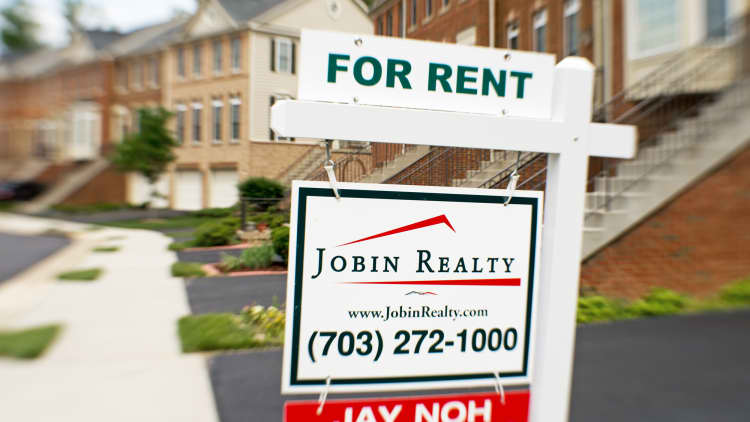There has long been a saying in the real estate market that potential homebuyers don't buy according to the home price or the mortgage rate. Instead, "they buy the monthly payment." The monthly payment is, of course, a combination of rate and price, but the weight of each can change dramatically.
For example, home prices were able to soar uncontrollably during the last housing boom only because risky mortgage products at the time made monthly payments minuscule and down payments often nonexistent.
Of course when those monthly payments turned into pumpkins, the housing market came crashing down. A dramatic rise in home prices, like we saw last year, can slow home sales even when mortgage rates are low if mortgage availability is tighter. That's what we saw in the first half of this year.

Fast forward to today. Mortgage rates are near historic lows and haven't moved much in the past year, since jumping a full percentage point from their bottom in the late spring of 2013. Home prices, which jumped by double digits in 2013, are only now beginning to ease.
"For the first time since February 2008, all cities showed lower annual rates than the previous month," noted David Blitzer, chairman of the Index Committee at S&P Dow Jones Indices in a release. "Other housing indicators—starts, existing home sales and builders' sentiment—are positive. Taken together, these point to a more normal housing sector."
Read MoreUS home prices show 'sustained slowdown' in June: S&P/Case-Shiller
True, for the first time in six years, home prices in all of the nation's top 20 housing markets saw smaller annual gains in June, according to S&P/Case-Shiller Indices. Make no mistake, the prices are still higher, but the jumps are finally shrinking. As investors move out of the market and mortgage-dependent buyers move in, the double-digit price gains we saw last year have disappeared.
Sellers are, in fact, reducing the list price at a much higher rate than at this time last year, according to Redfin, a real estate brokerage and analytics firm.
"Sellers are finally getting the word that this is a different market than 2013," said Nela Richardson, Redfin's chief economist. "We are seeing the gradual end of multiple offers, and escalation clauses are becoming a thing of the past in all but the most desirable markets."
That leaves mortgage rates as the wild card as the housing recovery enters the fall season, a period historically driven by first-time buyers. Those buyers have been disproportionately hard hit by the recession and slowest to return to the market. Rates are still low, but buyers today are extremely sensitive to the slightest moves.
Read More High-end house flipping is soaring
"It never ceases to amaze me how hung up mortgage borrowers can be on rate," said Matthew Graham of Mortgage News Daily. "In fact, a lot of times we have to remind them that the .125 percent difference in rate only amounts to X dollars and they're surprised."
The average contract rate on the 30-year fixed mortgage has moved slightly lower in recent weeks, as the yield on the 10-year Treasury shrinks. It hovers just above 4 percent, but can't seem to break lower, through to that psychologically significant 3 percent range. Rates loosely follow that yield but are also influenced by changing mortgage finance policy and a smorgasbord of fees inflicted on lenders by Fannie Mae and Freddie Mac, which largely fuel the mortgage market today.
There is also uncertainty surrounding Fannie and Freddie's future and the future of their mortgage-backed securities.
"As a rule, uncertainty hurts value," added Graham.
Read More Where you give up the most to afford a house
Rates are not at rock bottom, so there is no great incentive for a buyer to jump now to take advantage of the lowest rate. They are also not rising, so there is no incentive to buy based on fear that rates will go higher. The argument could also be made that rising rates would be the outcome of an improving economy, and that improvement would be a stronger driver for homebuyers ... stronger than the extra cost of rising rates in a monthly payment.
All of this is why there seems to be equal gangs of bulls and bears in the housing market today. Some claim affordability is still good enough to drive demand through the fall and into 2015. Others claim rising rates, weak income growth and a conservative lending environment will stall the market in its tracks. And that's just the demand side. The supply side is another story.
—By CNBC's Diana Olick


